"Cherishing Little Steps - A Haven for Baby and Family Journeys"
How to Choose Car Seats
Are you a new parent, wondering how to choose the perfect car seat for your little one? With so many options out there, it can be overwhelming. But don’t worry, we’re here to help!
Let’s imagine you have a newborn baby and you want to find a car seat that will keep them safe and comfortable on every ride. When it comes to choosing a car seat, there are a few key factors to consider.
From safety ratings to age and weight requirements, we’ll guide you through the decision-making process. So, get ready to make an informed choice and ensure your child’s safety on the road.
Key Takeaways
- Look for car seats with high safety ratings, including specific crash test results and safety features like five-point harness systems and side-impact protection.
- Follow age and usage guidelines, such as using rear-facing seats for newborns up to 2 years old and transitioning to forward-facing seats at 2 years old.
- Consider the type of car seat, whether it be an infant car seat with a detachable base or a convertible car seat that can be used in both rear-facing and forward-facing positions.
- Take into account comfort and convenience features, such as plush padding, adjustable headrests, user-friendly designs, and removable and machine washable car seat covers.
Safety Ratings

First, you should look for car seats with high safety ratings. When it comes to ensuring the safety of your child, nothing is more important. Safety ratings are determined through rigorous crash tests that evaluate the performance of car seats in various simulated accident scenarios. These tests assess the effectiveness of safety features such as the seat’s ability to absorb impact, restrain the child, and protect their head and neck.
Look for car seats that have undergone independent safety testing by organizations like the National Highway Traffic Safety Administration (NHTSA) or the Insurance Institute for Highway Safety (IIHS). These organizations evaluate car seats based on their performance in frontal, side-impact, and rollover crash tests. Pay attention to the overall safety rating given to the car seat, as well as specific crash test results.
Additionally, consider the safety features offered by the car seat. Look for features like a five-point harness system, side-impact protection, energy-absorbing foam, and adjustable headrests. These features enhance the safety of the car seat and provide added protection for your child in the event of an accident.
Age and Weight Requirements
When considering car seats, it is important to take into account the age and weight requirements for your child’s safety. Following the minimum requirements and safety guidelines ensures that your child is properly protected while traveling in a vehicle.
Here is a table that outlines the general age and weight requirements for car seats:
| Age Range | Weight Range | Car Seat Type |
|---|---|---|
| Newborn – 2 | Up to 35 lbs | Rear-facing seat |
| 2 – 4 | 20 – 65 lbs | Forward-facing seat |
| 4 – 8 | 40 – 100 lbs | Booster seat |
For newborns up to 2 years old, a rear-facing seat is recommended. This position provides optimal support for their developing neck and spine. Once your child reaches 2 years old and meets the weight requirements, you can transition to a forward-facing seat. This type of seat offers more freedom of movement while still providing essential protection.
As your child grows older, between the ages of 4 and 8, they can switch to a booster seat. This ensures that the seat belt fits them properly and provides adequate restraint in case of an accident. It is important to remember that these are general guidelines, and it’s crucial to consult the specific manufacturer’s recommendations and your local regulations for car seat usage.
Convertible or Infant Car Seat

You should consider whether to use a convertible or infant car seat based on your child’s size and age. Both options have their pros and cons, so it’s important to make an informed decision.
Infant car seats are specifically designed for newborns and infants. They’re rear-facing and have a smaller size, which provides a snug fit for your baby. These seats often come with a detachable base that allows you to easily move your sleeping baby in and out of the car without disturbing them. However, one drawback is that infant car seats have a lower weight limit compared to convertible car seats. This means your child will outgrow the seat sooner, requiring you to purchase a new one.
On the other hand, convertible car seats can be used in both rear-facing and forward-facing positions. They have a higher weight limit, allowing your child to use the seat for a longer period of time. Additionally, convertible car seats are more cost-effective since you won’t need to buy a separate infant seat. However, they tend to be bulkier and can be more challenging to install and adjust.
According to experts, it’s recommended to start with an infant car seat for newborns and then transition to a convertible car seat once your child reaches the weight and height limit of the infant seat. This allows for maximum safety and comfort for your little one.
Rear-Facing Vs. Forward-Facing
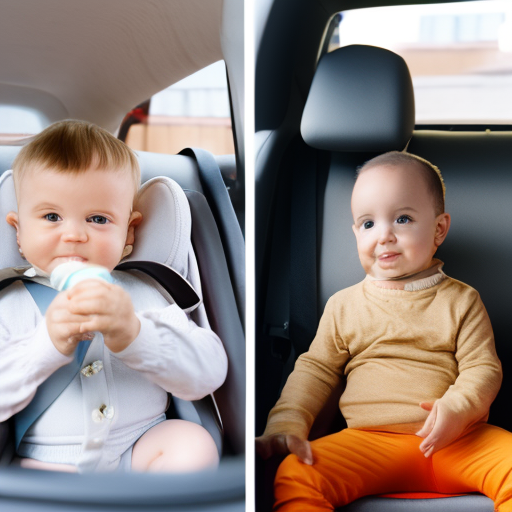
To determine the best car seat for your child, consider whether you need a rear-facing or forward-facing option. While both options have their merits, it’s important to understand the benefits of rear-facing and the risks of forward-facing.
Rear-facing car seats are designed to provide maximum protection for infants and young children. One of the key benefits of rear-facing seats is that they provide superior support for the head, neck, and spine. In the event of a collision, the force is distributed evenly across the child’s back, reducing the risk of injury. Rear-facing seats also protect the child’s fragile head and neck, which are still developing at this stage.
On the other hand, forward-facing car seats come with certain risks. When a child is facing forward, the impact of a collision is absorbed by the child’s neck, which can lead to serious injuries. The force exerted on the child’s body during a crash can cause the head to be thrown forward, potentially resulting in spinal cord damage or traumatic brain injury.
Installation Methods
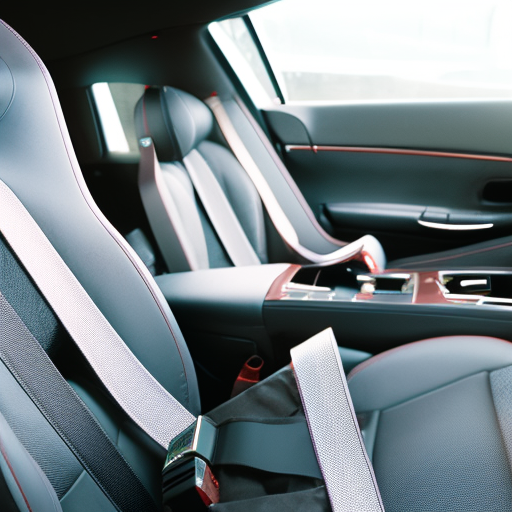
Installing car seats correctly is crucial for ensuring the safety of your child while traveling. Here are some installation tips to help you secure your car seat properly:
| Installation Method | Description |
|---|---|
| LATCH (Lower Anchors and Tethers for Children) | This method uses anchors located in your vehicle to attach the car seat securely. Make sure to follow the weight and age limits specified by the car seat manufacturer. |
| Seat Belt | Use the seat belt to secure the car seat if your vehicle doesn’t have LATCH anchors. Ensure that the seat belt is locked properly and the car seat is tightly installed. |
| Combination | Some car seats allow you to use both the LATCH and seat belt installation methods. This option provides an extra layer of security. |
Now that you know the different methods, let’s discuss some common mistakes to avoid during installation. One common mistake is not tightening the straps enough. The car seat should not move more than an inch in any direction. Another mistake is not using the correct recline angle. Follow the car seat manufacturer’s instructions to ensure the proper recline position for your child’s age and weight. Lastly, remember to register your car seat with the manufacturer to stay informed about any recalls or safety updates.
Ease of Use

When choosing a car seat, it’s important to consider the ease of use. After all, you want a car seat that isn’t only safe but also convenient to use on a daily basis. Here are some factors to consider when evaluating the ease of use of a car seat:
-
Comfort features: Look for car seats that have plush padding, adjustable headrests, and cushioned armrests. These features will ensure that your child is comfortable during long car rides and naps in the car.
-
Design options: Consider car seats that have a user-friendly design. Look for features like easy-to-adjust straps, one-handed recline options, and a straightforward installation process. These design options will make it easier for you to install and adjust the car seat as your child grows.
-
Ease of cleaning: Check if the car seat cover is removable and machine washable. Spills and accidents are inevitable, and being able to easily clean the car seat will save you time and effort.
By considering these factors, you can choose a car seat that not only provides the necessary safety features but also offers convenience and comfort for both you and your child.
Comfort and Support
Consider the comfort and support provided by car seats when choosing the right one for your child.
The materials used in the construction of the car seat greatly impact the level of comfort your child will experience during car rides. Look for car seats that are made with high-quality, breathable materials that are gentle on your child’s skin. These materials should also be easy to clean, as spills and accidents are bound to happen.
Additionally, consider the ergonomic design of the car seat. Look for seats that have ample padding and support in all the right places, such as the headrest and lumbar area. The seat should also have adjustable features to accommodate your child’s growth and provide optimal comfort.
Durability and Longevity
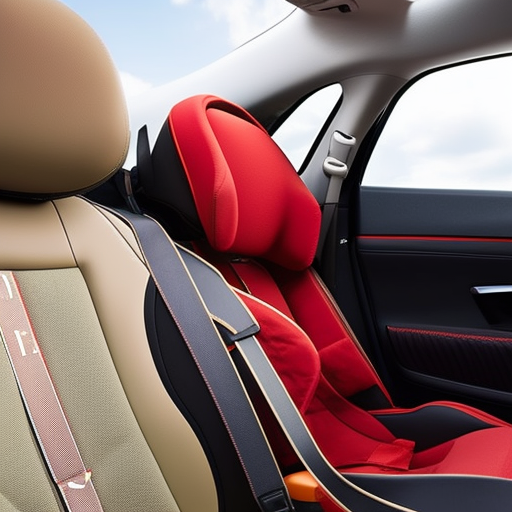
For long-lasting protection and peace of mind, look for car seats that are built to withstand rigorous use and grow with your child. When it comes to durability and longevity, there are a few key factors to consider.
Durability testing: Look for car seats that have undergone rigorous durability testing. This ensures that the seat can withstand the everyday wear and tear of use, as well as any unexpected impacts or accidents. Check for certifications such as the Federal Motor Vehicle Safety Standard (FMVSS) to ensure that the seat meets safety standards.
Product lifespan: Consider how long the car seat is designed to last. Some seats are designed to be used from infancy to toddlerhood, while others can be converted to accommodate a growing child up to a certain weight or height. Look for seats with adjustable features, such as a removable infant insert or adjustable harness, to ensure that the seat can adapt as your child grows.
Quality materials: Pay attention to the materials used in the construction of the car seat. Look for seats that are made with high-quality, durable materials that can withstand repeated use and cleaning. Additionally, consider the ease of cleaning the seat, as spills and messes are inevitable with young children.
Cleaning and Maintenance

To keep your car seat clean and well-maintained, regularly clean and inspect it for any signs of wear or damage. Proper cleaning and maintenance not only extend the lifespan of your car seat but also ensure the safety and comfort of your child.
One essential aspect of maintenance is to regularly remove and wash the car seat covers. These covers protect the seat from spills, stains, and dirt. Follow the manufacturer’s instructions for removing and washing the covers. Most covers can be machine-washed on a gentle cycle using a mild detergent. Avoid using bleach or harsh chemicals that may damage the fabric.
Additionally, it’s important to address any stains promptly. For general stains, a mixture of mild soap and water can be used. For tougher stains, consider using specialized stain removal techniques or products recommended by the car seat manufacturer. Remember to thoroughly dry the covers before reattaching them to the car seat.
Budget Considerations

When shopping for car seats, it’s important to keep your budget in mind. Here are some key points to consider when it comes to budget considerations:
-
Cost Comparison:
-
Research and compare prices of different car seat brands and models to find the best deal.
-
Look for discounts or sales, especially during holiday seasons or major shopping events.
-
Consider purchasing a car seat online, as they often offer competitive prices and deals.
-
Value for Money:
-
Look for car seats that offer a good balance between price and features. Consider what features are essential for your needs and prioritize those.
-
Read customer reviews and ratings to gauge the overall satisfaction and durability of the car seat.
-
Check for safety certifications and standards compliance to ensure you’re getting a reliable and trustworthy product.
-
Long-term Investment:
-
Consider investing in a convertible car seat that can be used for a longer period of time, accommodating your child’s growth stages.
-
Look for car seats with removable and washable covers, as this can save you money in the long run by avoiding the need for frequent replacements.
Brand Reputation and Reviews
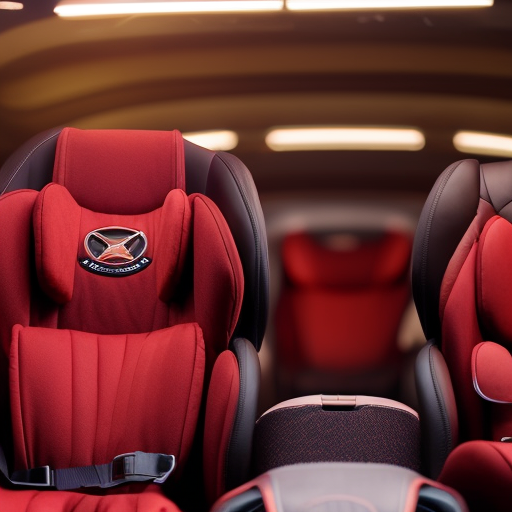
Considering brand reputation and reviews is crucial when choosing car seats. It helps you gauge the quality and reliability of the products you’re considering. Before making a purchase, it’s important to check out the reputation of the brand and read reviews from other customers. Look for brands that have a good track record of producing high-quality car seats that meet safety standards. Reading reviews can give you valuable insights into the experiences of other parents who’ve used the car seats you’re interested in.
When considering brand reputation and reviews, it’s also important to take into account the price range and availability in local stores. Some brands may have a wide range of car seats available, catering to different budgets. It’s worth comparing prices and features to find the best option for your needs. Additionally, check if the car seats you’re interested in are easily available in local stores. This can be convenient if you prefer to see and test the car seats before making a decision.
Additional Features and Accessories
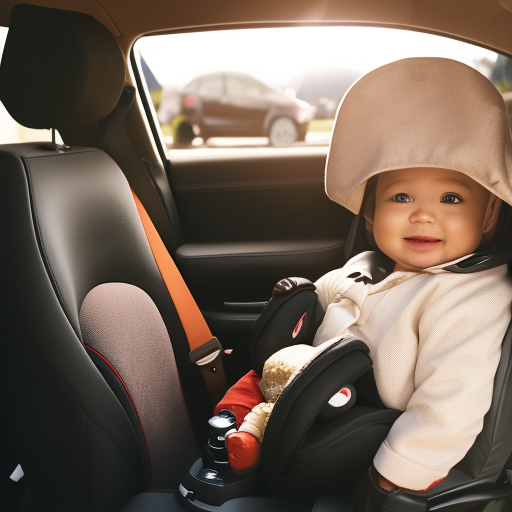
To further enhance your selection of car seats, take into account the various additional features and accessories available. These features and accessories can provide added comfort, convenience, and safety for both you and your child. Here are some options to consider:
-
Reclining Positions: Look for car seats that offer multiple reclining positions. This allows your child to sit comfortably, whether they’re sleeping or awake.
-
Adjustable Headrest: An adjustable headrest ensures that the car seat grows with your child. It provides proper head and neck support at every stage of their development.
-
Cup Holders: Car seat accessories such as cup holders can be incredibly handy for keeping drinks or snacks within reach. They help prevent spills and keep your child entertained during the journey.
-
Removable Covers: Opt for car seats with removable, machine-washable covers. This makes it easier to clean up any messes and maintain a hygienic environment for your child.
-
LATCH System: Check if the car seat comes with a LATCH system, which stands for Lower Anchors and Tethers for Children. This system provides an extra level of stability by securely attaching the car seat to your vehicle.
-
Sun Shades: Car seat accessories like sun shades can protect your child from harmful UV rays. Look for shades that are easy to attach and adjust.
Frequently Asked Questions
What Are the Best Car Seats for Tall Infants or Toddlers?
When choosing a car seat for tall infants or toddlers, it’s important to prioritize car seat safety and proper installation. Look for seats with adjustable harnesses and high weight/height limits to accommodate your child’s growth.
Are There Any Car Seats Specifically Designed for Premature Babies?
Premature baby car seats are designed with special features to ensure the safety and comfort of your little one. When choosing a car seat for your premature baby, it is important to follow car seat safety guidelines specifically designed for premature babies.
How Often Should Car Seats Be Replaced?
When it comes to car seat safety, it’s important to know when to switch to a booster seat and how to properly install a car seat. As for replacing car seats, experts recommend doing so every 6-10 years due to wear and tear.
Can Car Seats Be Used in Taxis or Rideshare Vehicles?
When hopping in a taxi or rideshare, make sure your kiddo is safe and secure. Check car seat regulations and installation to keep them snug as a bug on the go.
Are There Any Car Seats That Are Suitable for Use on Airplanes?
When choosing a car seat for airplanes, make sure to look for airline approved car seats that meet the safety regulations. These seats are designed to provide maximum protection for your child during the flight.
Conclusion
So there you have it, folks! When it comes to choosing car seats, it’s all about safety, convenience, and your child’s needs.
Remember to check safety ratings, consider age and weight requirements, and decide between a convertible or infant car seat.
Don’t forget to install it properly and keep it clean.
Stay within your budget, research brands and read reviews, and look for any additional features or accessories that may come in handy.
Happy car seat shopping!



Can you be more specific about the content of your article? After reading it, I still have some doubts. Hope you can help me.